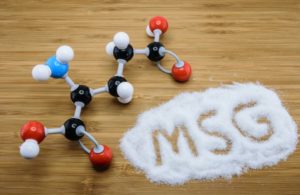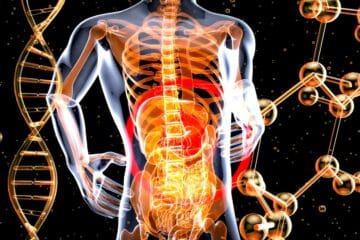What is Monosodium Glutamate?

Why is MSG bad for you?
Monosodium Glutamate is a compound of sodium salt and glutamic acid (which is a naturally occurring non-essential amino acid found in your body). Your body uses glutamate as a neurotransmitter. Abnormal function of glutamate receptors has been linked with certain neurological diseases, such as Alzheimer’s disease and Huntington’s chorea. Injections of glutamate in laboratory animals have resulted in damage to nerve cells in the brain
MSG is also considered an excitotoxin, which means that it overexcites your body’s cells to the point of damage or death, causing brain damage to varying degrees — and potentially even triggering or worsening learning disabilities, Alzheimer’s disease, Parkinson’s disease, Lou Gehrig’s disease and more.
MSG can affect these body systems: blood pressure, brain, digestive system, endocrine system, hearing, lungs, allergies, pancreas, thyroid function, vision, hypothalamus, nervous system, heart rate, hypoglycemia
MSG can affect these diseases: ADD/ADHD, Allergies, Alzheimer’s Disease, Asthma, Atrial Fibrillation (cardiac arrhythmia), Autism, Diabetes, Depression, Dizziness, Epilepsy, Fibromyalgia, High Blood Pressure, Hypothyroidism, Hypoglycemia, IBS, Migraines, Multiple Sclerosis, Obesity, Pituitary tumors, Rosacea, Sleep Disorders and Tinnitus
How can I tell MSG is in my food?
Glutamic acid found in unadulterated protein does not cause adverse reactions. To cause adverse reactions, the glutamic acid must have been processed/manufactured or come from protein that has been fermented.
Watch Out! Monosodium Glutamate can have many different names. Here is a brief list:
Names of ingredients that always contain processed free glutamic acid:
Glutamic acid (E 620)2, Glutamate (E 620), Monosodium glutamate (E 621), Monopotassium glutamate (E 622), Calcium glutamate (E 623), Monoammonium glutamate (E 624), Magnesium glutamate (E 625), Natrium glutamate, Yeast extract, Anything “hydrolyzed”, Any “hydrolyzed protein”, Calcium caseinate, Sodium caseinate, Yeast food, Yeast nutrient, Autolyzed yeast, Gelatin, Textured protein, Soy protein, soy protein concentrate, Soy protein isolate, Whey protein, whey protein concentrate, Whey protein isolate, Anything “…protein”, Vetsin, Ajinomoto
Names of ingredients that often contain or produce processed free glutamic acid:
Carrageenan (E 407), Bouillon and broth, Stock, Any “flavors” or “flavoring”, Maltodextrin, Citric acid, Citrate (E 330), Anything “ultra-pasteurized”, Barley malt, Pectin (E 440), Protease, Anything “enzyme modified”, Anything containing “enzymes”, Malt extract, Soy sauce, Soy sauce extract, Anything “protein fortified”, Anything “fermented”, Seasonings
Sources:
http://en.wikipedia.org/wiki/Monosodium_glutamate
http://articles.mercola.com/sites/articles/archive/2009/04/21/msg-is-this-silent-killer-lurking-in-your-kitchen-cabinets.aspx
http://www.msgtruth.org/
http://www.truthinlabeling.org/hiddensources.html
